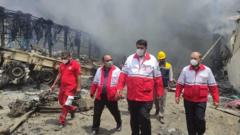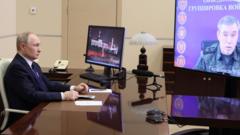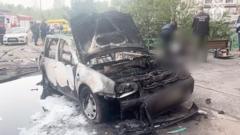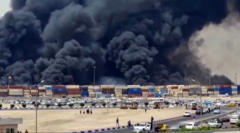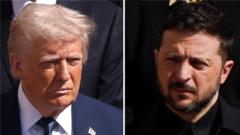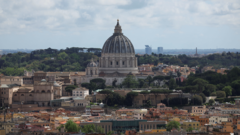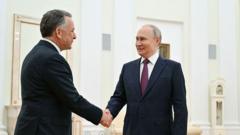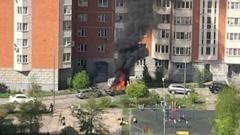A Russian drone reportedly struck the protective shelter over Chernobyl’s nuclear reactor, causing a fire and prompting heightened alert from the IAEA. Despite assurances that radiation levels remain stable, the potential for leaking radioactive material now exists, raising alarms among experts and officials.
Chernobyl's Radiation Shield Struck by Russian Drone in Disturbing Incident
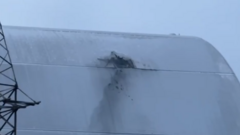
Chernobyl's Radiation Shield Struck by Russian Drone in Disturbing Incident
Ukrainian President Zelensky reveals damage to Chernobyl’s protective covering, raising concerns over nuclear safety.
A Russian drone has reportedly struck the protective overhead shelter at Chernobyl, the site of the catastrophic 1986 nuclear disaster, according to Ukrainian President Volodymyr Zelensky. The incident, which resulted in a fire that has since been extinguished, has reignited fears of nuclear safety, with both local authorities and international agencies on high alert. Despite the International Atomic Energy Agency (IAEA) declaring radiation levels inside and around the site to be "normal and stable," fears persist after Oleksandr Titarchuk, the chief engineer at Chernobyl, acknowledged that the risk of radioactive substances leaking now exists.
Russia has vehemently denied any involvement, claiming it does not target Ukrainian nuclear facilities. The IAEA quickly dispatched emergency personnel following the reported explosion, asserting that there were no reported casualties while maintaining vigilance on this critical issue. The organization’s director general, Rafael Grossi, articulated the seriousness of the situation, stating, “There is no room for complacency.”
The Chernobyl radiation shield, which is crucial for containing radioactive materials over the next century, was constructed with considerable investment and engineering efforts, measuring 275 meters wide and 108 meters tall. Zelensky shared video evidence showcasing the damage on social media, raising further concerns over the severity of the situation. Hryhoriy Ishchenko, who leads the agency overseeing the exclusion zone around Chernobyl, expressed that a slight shift during the drone strike could have led to a nuclear catastrophe.
Experts weigh in on the incident. Professor Jim Smith, who has researched Chernobyl for over three decades, deemed the attack as an “horrendous” affront to nuclear safety, yet expressed limited worry about immediate radiation risks, citing the solid concrete "sarcophagus" in place. Simon Evans, associated with constructing the shelter, condemned the strike as a reckless act targeting a vulnerable facility not designed to withstand aerial drone attacks.
This incident at Chernobyl follows recent escalations around the nearby Zaporizhzhia Nuclear Power Plant, which continues to be a site of concern. Former U.S. President Donald Trump previously announced that Russian President Vladimir Putin had shown a willingness to negotiate peace in Ukraine, a claim Zelensky disputed, asserting that the drone strike indicates the opposite.
As tensions escalate in the region, experts are particularly cautious about the implications of further military involvement around nuclear sites, reiterating the potential for disaster if reckless actions continue. The Chernobyl disaster remains a stark reminder of nuclear peril, with countless lives affected, and this latest incident underscores the fragile balance of safety in a war-torn landscape.


